How a Norfolk dairy diversified into tourism and hospitality
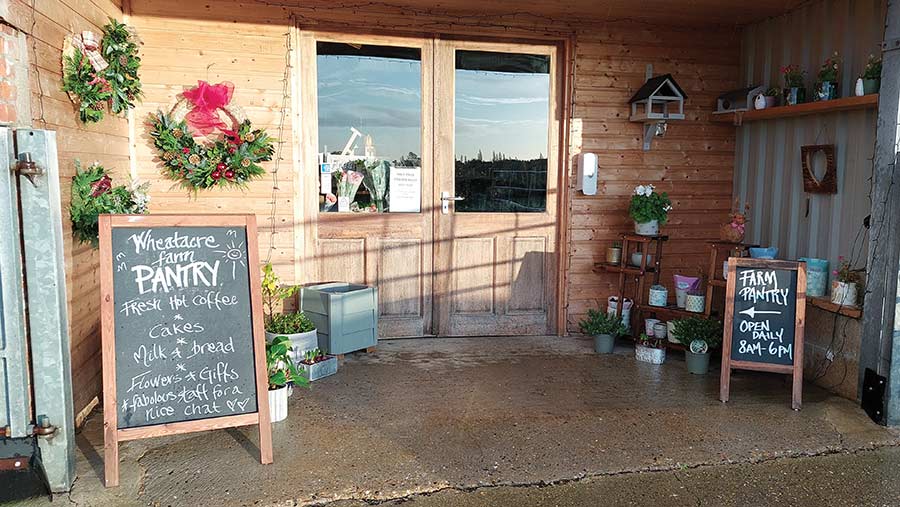 The farm shop began during the Covid-19 lockdown in the old bullock shed © MAG/Shirley Macmillan
The farm shop began during the Covid-19 lockdown in the old bullock shed © MAG/Shirley Macmillan Converting a set of Georgian barns into holiday lets 20 years ago involved market research by post for dairy farmers Joanna and
David Burroughs.
Today, their daughter, Lindsay Miller, is using social media to develop the business at Wheatacre Hall, near Aldeby in Norfolk.
The result is a farm shop, a café planned for spring 2024, and a move into processing more milk from the family’s 460-cow herd.
With Lindsay’s passion for cows and good food, telling the story of where milk comes from is driving her ambition to make the farm a self-contained leisure destination.
See also: So you want to….offer caravan storage
Farm facts: Wheatacre Hall Farm
- 460 British Friesian cows, plus replacements
- 154ha milking platform
- 105ha maize
- 121ha grass silage
- Average yield 7,800 litres
- Feeds 1.8t concentrates a cow
- Four full-time labour units plus one relief
- Calves end of August to end of November
- 45-point rotary parlour built in 2014
- 340 sand cubicles
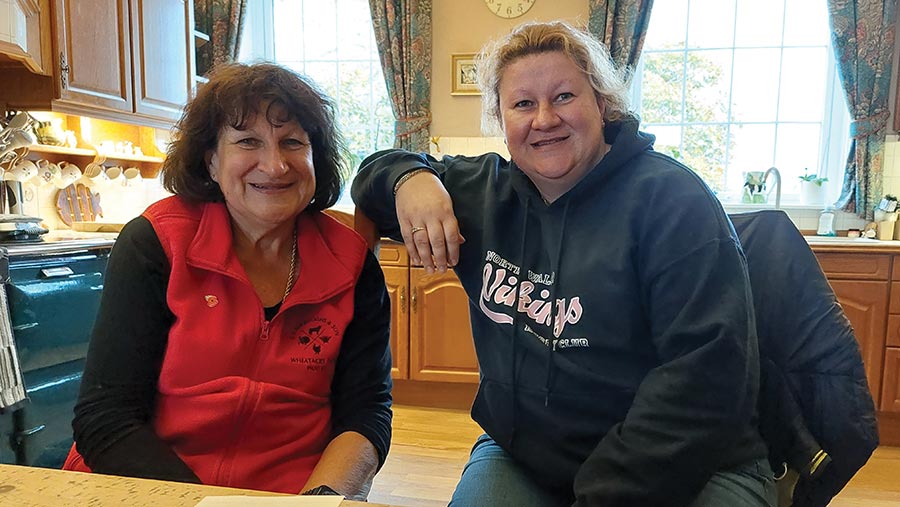
Joanna Burroughs and Lindsay Miller © MAG/Shirley Macmillan
“We tell the story, people can see milking, we sell our own milk, and we use social media to connect it all. Instagram and Facebook drive it,” she says.
Lindsay’s brother Jamie has built up the dairy herd and switched management to autumn block-calving and rotational grazing.
The dairy herd underpins the diversifications, contributing 60% of profit, while the barns now make up 30% and the shop 10%.
When Joanna and David bought the farm in 1985, it was a mixed arable, sheep and beef operation.
David moved 70 dairy cows over from the home farm and, five years later, built a unit for 120 cows on a greenfield site.
Barn conversion
Although the brick and clay pantile barns were now redundant, Joanna did not want them to fall into disrepair.
The couple ruled out conversion into dwellings, not least because the farmhouse kitchen overlooks the barns.
“We were still a working farm, and it wouldn’t have worked with other people living on site. We looked at lots of ideas such as storage, but didn’t think anyone would want holidays here.”
More research, however, prompted her to reconsider.
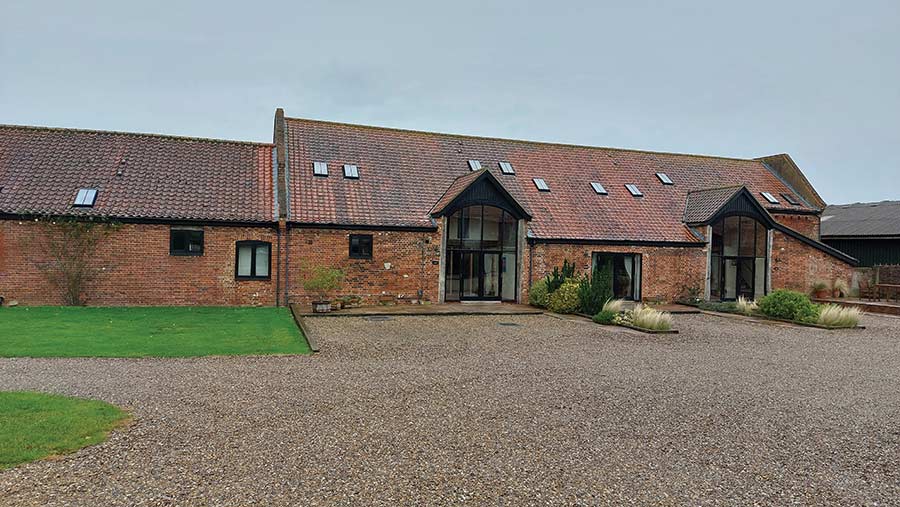
Traditional Georgian barns are now high-quality holiday lets © MAG/Shirley Macmillan
“We are on the edge of the southern Broads and 15 minutes from the coast,” she says, adding that the farmhouse accommodation centres on bed and breakfast rather than self-catering.
After a year of investigating, then gaining planning permission, building began in 2005.
By Easter 2006, the first guests arrived to stay in six units, and two more were added in 2008.
From the start, Joanna targeted the higher end of the market. “I wanted people to have a home-from-home feeling,” she says.
“This wouldn’t be their main holiday, but the second one in the year, or a weekend break. We now get families and groups of friends to stay: I can sleep 41 people across the eight units and everyone still gets their own space.”
Joanna sourced high-quality and local interiors where possible, although she filled a shipping container from China for cost-effectiveness, via a friend’s furniture shop.
“I had big ideas, but the reality of it was cost when I had to buy eight of everything.”
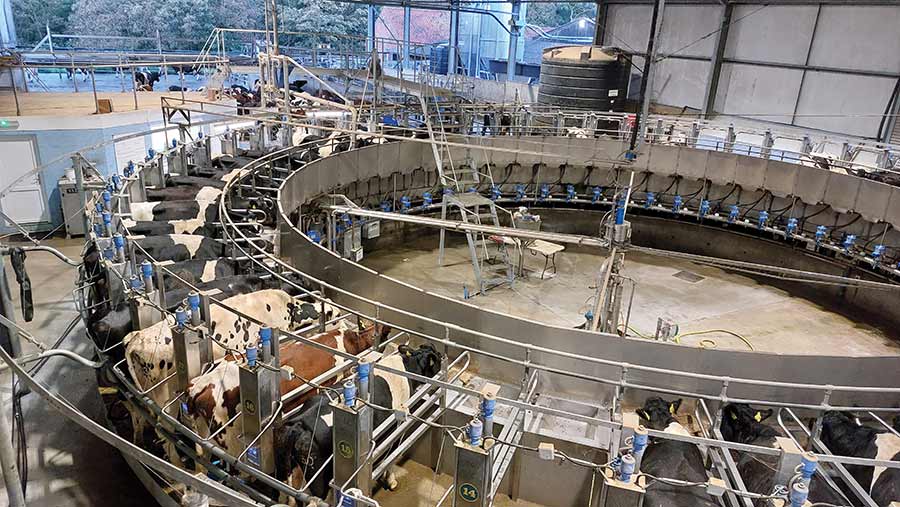
Holidaymakers can watch the 460-cow herd being milked © MAG/Shirley Macmillan
Tough market
Today, she looks after the holiday barns full-time with the help of six staff. She advises anyone who is considering holiday cottages to look hard at the time involved.
“The biggest thing I didn’t realise is that, when living on site, it’s 24/7 all year round. Even if the office is closed, it doesn’t mean anything in the age of mobile phones.”
Despite extras such as free use of a hot tub, a games room and a fitness barn, Joanna says it is a hard market.
She supplies bicycles and pays an annual fee to let guests swim for free at the local pool.
Dogs are welcome and this has been a “massive” selling point.
But cottage pricing has always been a problem because there are no national guidelines.
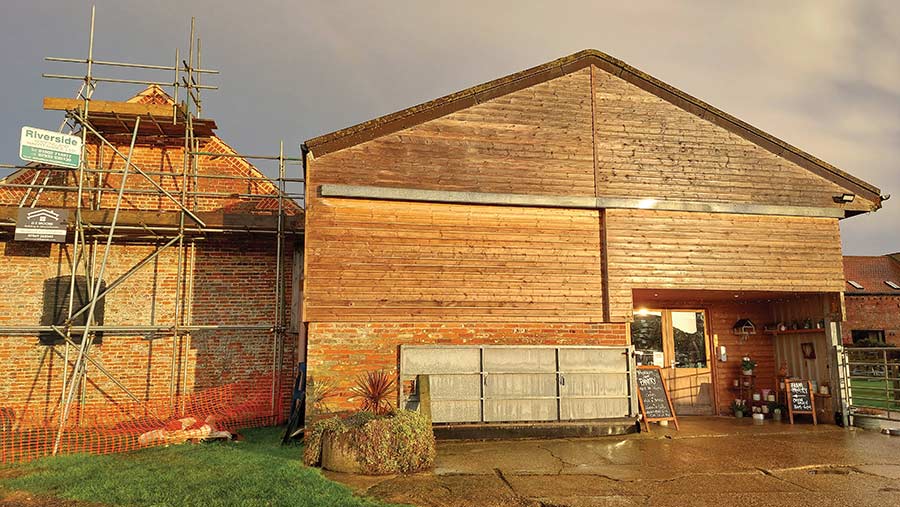
© MAG/Shirley Macmillan
“It is a complete minefield; if it’s too expensive, people won’t come. You need to know your costs 12 months in advance.”
Lindsay says recent years have really started to pinch, with the increase in energy and labour costs, and the huge growth in the Airbnb market has not helped.
She is also finding a more demanding consumer means holiday lets are harder to sell than 10 years ago.
This is why she is now developing themes, to bring people to stay and take part in an activity such as crafts or cookery.
“We’re trying to develop the site as a destination to do something and join up with other local businesses,” she explains.
“We get lots of walking groups and staff away-days. We have to be one step ahead with something niche.”
Farm shop
At the start of the Covid lockdown in 2020, the local pub asked for help in disposing of all the food it had bought in for Mother’s Day lunches.
Lindsay set up trestle tables in the open-sided bullock shed and advertised on the village’s Facebook page.
The farm had already built up some local custom by selling pasteurised milk at farmers’ markets, shops and cafés.
“Overnight, people were queuing to come and buy. We used to sell about 20 litres of our milk a week and it rose sixfold,” she says.
Working with local suppliers and sourcing from wholesalers, the makeshift shop continued and, once restrictions were relaxed, the bullock yard was pressure-washed and fitted with a marquee.
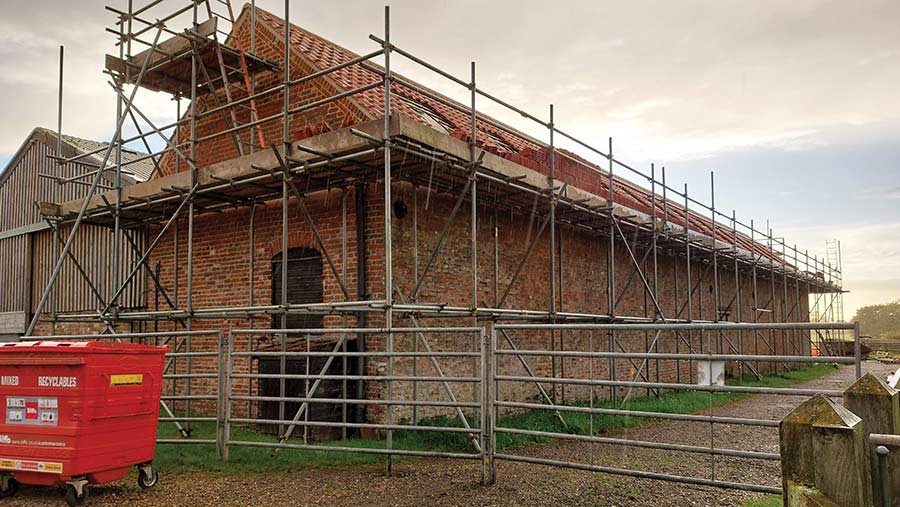
Once the roof is fixed, the old stable will become a two-storey café venue © MAG/Shirley Macmillan
When shoppers said they were keen to support a permanent farm shop, Lindsay says they got more professional.
“We cold-sheeted the feed face and used potato boxes for shelves. We ordered fridge-freezers, installed a toilet, a store cupboard and a walk-in chiller; a local carpenter made some stands.
“There is nothing fancy: it is a rustic farm shop with no heating, in an agricultural building. Our focus is on local food, gifts and suppliers – although people can do a weekly shop here. Some just get a pint of milk, others spend £100.”
The shop now employs four people, with Joanna and Lindsay providing backup.
Passing trade from walkers and horse riders led to the installation of a coffee machine and, as Lindsay discovered, “everyone buys cake as well”.
“We did a lot of research and found that farm cafés were packed with people having breakfast or coffee with friends.”
While the barn next to the shop is being reroofed, Lindsay is awaiting planning permission and has lined up builders to create a two-storey café and meeting/party room, with a patio and play area, to open next spring.
The aim is to employ another four or five people, including a chef, and mirror the shop opening hours of 8am to 6pm, seven days a week.
Lindsay’s next goal is to process more of the farm’s milk into yoghurt, and the family is keen to encourage visitors to watch milking.
Their rotary parlour was built with a viewing platform and classroom, yet David says eight out of 10 people think the cows are milked by hand.
